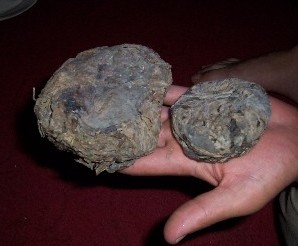Gretchen Peters certainly has a sense of timing. She spent the last decade covering Afghanistan and Pakistan, first for the Associated Press and later for ABC News, and managed to bring "Seeds of Terror" to press just as the US and its NATO allies in Afghanistan begin lurching toward a new approach to drug policy there. Just this past weekend, the US announced it was giving up on trying to eradicate its way to victory over the poppy crop, and for the past few weeks, news accounts of US and NATO attacks on traffickers, opium stockpiles, and heroin labs have been coming at a steady, if not escalating, pace.

But where "Seeds of Terror" shines is in its unparalleled detail and depth of knowledge of the drug trade, the Taliban/Al Qaeda insurgency, the Pakistan connection, and the intricate and complicated linkages between the actors. With access to government and security officials from the US, as well as Pakistan and Afghanistan, and through interviews with everyone from simple famers to fighters to opium traders and even some amazingly high-up people in the international heroin trade, Peters is able to navigate and share with readers the murky, ever shifting nature of the beast.
She is especially useful in unraveling the various groupings that are simplistically referred to as "the Taliban." There is no single Taliban, Peters explains; there are rival warlords (Hekmatyar, Haqqani, Mullah Omar) running their drug empires and fighting to drive out the Westerners, their jihadist convictions clouded more each year in a haze of opium smoke and illicit profits. And then there are what are in essence criminal drug trafficking organizations. They, too, will identify themselves as Taliban for pragmatic reasons -- the intimidation factor, mainly -- but have little interest in holy war, except as it provides the chaotic cover for their underground trade.
Actually, as Peters details, the story goes back a generation further, to the last great American intervention into this Fourth World country on the other side of the planet. Then, during the Reagan-era sponsorship of the Afghan mujahedeen fighting to drive out the Soviet Red Army, millions of Afghans fled into refugee camps in Pakistan, and would-be warlords and foreign jihadis (including a young Osama bin Laden), tussled for the billions of dollars coming from Washington and doled out by Pakistani intelligence, or, alternately, from funding sources in Saudi Arabia.
Those warlords turned Pakistan, particularly the refugee-ridden Northwest Frontier territories into a leading opium producer during the 1980s, to ensure sources of funding for their armies, and secondarily, to turn as many Russian soldiers into junkies as they could. The Pakistani drug trafficking networks, including some very highly placed army and other officials, set up then are still the main conduits for the opium and heroin leaving Afghanistan today. Man, talk about your blowback.
Peters has a keen grasp of local affairs, knows how to write, and has constructed a gripping and informative narrative. But, faced with a counterinsurgency effort that has floundered, in good part because of profits from the illicit drug trade keeping the Taliban well-supplied with shiny new weapons, she cannot resist the temptation to try her own hand at recommending more effective policies. Here, unfortunately, she is decidedly conventional and unquestioning of the prohibitionist paradigm.
For example, the proposal floated by The Senlis Council in 2005 to simply buy up the poppy crop and divert it into the legitimate medical market gets remarkably short shrift. Peters devotes a mere paragraph to the plan, dismissing it as not pragmatic -- a position not universally held by experts.
Similarly, her policy prescriptions, while including such progressive developmentalist planks as alternative livelihood programs, strengthening institutions, and opening new markets for new crops, also include a call to "arrest or kill" drug kingpins, heroin lab chemists, and even mid-level traffickers. She also advocates air strikes against smuggling convoys, "smarter" counterinsurgency, and beefed up law enforcement against the "bad guys."
Peters' thinking on drug policy may be decidedly inside the box, but her contribution to our understanding of the complex nexus between the illicit drug trade in Afghanistan, local insurgencies, and global jihadi ambitions is important and chilling. This is the best layperson's guide to that nexus out there.
This work by StoptheDrugWar.org is licensed under Creative Commons Attribution-ShareAlike 4.0 International
Add new comment